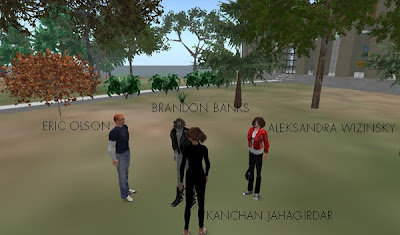Articles: The 3R Framework, Community Relations 2.0, & Virtual Worlds as Real-World Sales Tools
Article: The 3R Framework: Improving e-strategy across reach, richness, and range
This was a very interesting article that talks about leveraging the benefits of the 3R framework: Reach, Richness and Range. The article clarifies the definitions of the 3R as
- Reach: Reach is the degree to which a firm can manage its value chain activities to connect its customers to an accessible product/service offering.
- Richness: Richness is the degree to which a firm can facilitate the exchange of information to deliver products/services that match customers’’ exact wants and needs.
- Range: Range is the degree to which a firm can offer its customers a value proposition containing a breadth of products/services.
The framework provides an overall view of e-strategy, a new perspective on affiliation and discusses the interrelationships between the reach and range.
Article: Community Relations 2.0
This article talks about the amount of power that lies in information relayed via social media. Social media can be a very powerful tool across various industries. There’s one paragraph I would like to quote from the article that aptly talks about the capabilities of social media:
“Social medial platforms enhance the power of online communities in four ways: They promote deep relationships, allow fast organization, improve the creation and synthesis of knowledge, and permit better filtering of information”.
But sometimes as the article points out, information can also be lethal to companies. That’s why there is a strong need for companies to engage existing new generation employees who are already using social media to “harness the power of online communities”.
Article: Virtual Worlds as Real-World Sales Tools
Of the three articles I read, I found this one the most interesting since it talked about the Second Life which has been fascinating to me since its introduction in this class. It raises similar questions that I have pertaining to Second Life. It is very interesting no doubt, but what reason other than my class meetings & assignments will drive me to visit it recurrently? If I was enticed by a new product to visit a company’s venue in Second Life, why would I return to it?
The article points out one important factor for return visits: content & function. IBM has incorporated this very aspect in its collaboration efforts with customers to develop meaningful relationships. IBM realized the true value in “brining clients and sales people together in a 3D experience”. IBM’s virtual data center offers many compelling reasons for customers to return. This 3D environment engages “the human perceptive and attentive processes as much as possible”.
But for virtual worlds to be viable in the long run, barriers like security, investment in time on the user’s part, resource intensive virtual world client software packages use of bandwidth and such, must be overcome. Only then the intrinsic characteristics of the human nature can be leveraged in the 3D world and use the virtual world as a sales tool.





